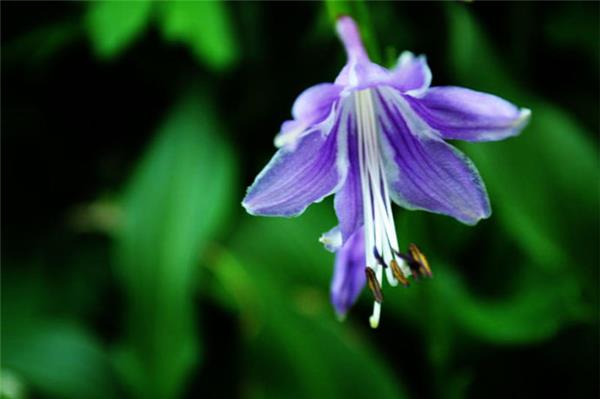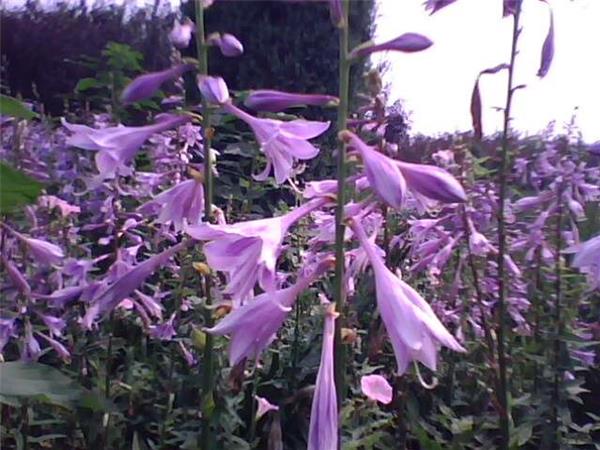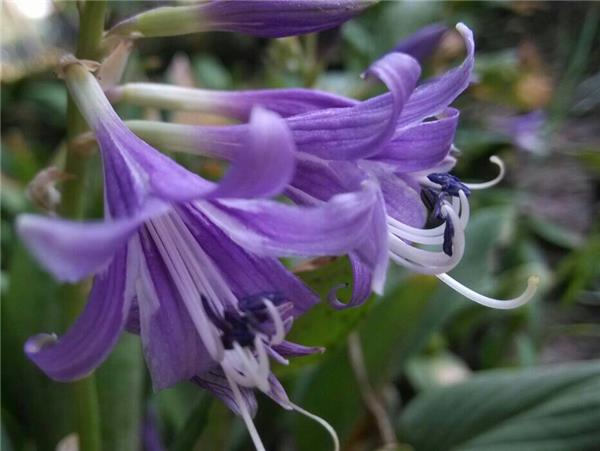What are the points for attention in the culture of Hosta purpurea
Purple Hosta is a very beautiful flower, with high ornamental value, originally wild, but now it is often used as an indoor potted ornamental plant.

Introduction of purple flower Hosta
Morphological features: it has a body as high as 60-70 cm, has a stout rhizome, the leaf is ovate, its front is sharp and full or wavy, and it almost reaches its base on both sides, and it is dark green and glossy above, while the lower part is green, and the leaf veins are curved and protruding. Its seeds are black and glossy, growing in moist areas under hillside forests. Its filaments are longer than its perianth and are medicinal red-purple.
Growth habits: purple hairpin is a warm and humid climate, do not like the long-term direct sunlight, its tillering ability and cold resistance is very strong. And its requirements on the soil are not strict in the general soil can also grow well, because it has a strong ability to adapt to the environment, so we can pot and plant it. Generally, potted plants are mainly used in families and courtyards or in public places, while as ground plants are generally used in community parks and green forest clearings and other places.

Culture method of Hosta purpurea
Upper basin: for the old basin that is re-used, it must be soaked in potassium permanganate 1000 times solution for more than half an hour, then rinse with clean water and dry for use. The new basin can be used directly. Generally use a smaller flowerpot (7.5cm plastic cup) planting, first in the bottom of the cup cushion 2cm around the matrix, and then move the sieve seedlings into the cup, seedlings should not be too deep, flat planting base is appropriate, 1-2 plants / pot; medium tightness, loaded to the cup 9 minutes full, gently vibrate the basin soil.
Basin soil: it is best to use sandy loam with fertile, well-drained and deep soil layer.
Temperature: like warm climate, but summer high temperature, muggy (more than 35 ℃, air relative humidity more than 80%) environment is not conducive to its growth; the winter temperature is very strict, when the ambient temperature is below 10 ℃, it can not safely survive the winter when the frost occurs.
Humidity: like a slightly humid climate, requiring the relative temperature of the air in the growing environment to be 50-70%.

Light: shield it from about 50% of the sun on a hot summer day. In spring, autumn and winter, because the temperature is not very high, it is necessary to give it direct sunlight to facilitate its photosynthesis and the formation of flower buds, flowering and fruiting. Put in indoor maintenance, as far as possible in places with bright light, such as well-lit living room, bedroom, study and other places.
Fertilizer and water: spring is the growing season for new leaves, so we should pay attention to the supply of water and fertilizer. Fertilizer should use mature organic fertilizer, thin fertilizer should be applied frequently. Because the Hosta requires high air humidity, it should be sprayed and sprayed several times a day on and around its leaves. When the temperature is high, the number of times of spraying water around it should be increased. Hosta basically does not grow new leaves in autumn, so the demand for fertilizer is not high, you can stop fertilization.
Diseases and insect pests: White silk disease, mainly because the plants are too dense and crowded and the time of stagnant water on rainy days is too long, it can be cured with medicine. Anthrax, mainly caused by excessive humidity and poor drainage, can mainly harm leaves and petioles as well as pedicels, which can also be treated with drug spraying.

Well, the above is all about the purple hairpin, this kind of charming flowers also won everyone's love? If you also want to raise a purple hairpin, I hope the above introduction can help you.
Related
- Wuhan Hospital Iron Tree Blooming Result Was Instantly Frightened by the Gardener Master
- Which variety of camellia is the most fragrant and best? Which one do you like best?
- What is the small blue coat, the breeding methods and matters needing attention of the succulent plant
- Dormancy time and maintenance management of succulent plants during dormancy
- Minas succulent how to raise, Minas succulent plant pictures
- What are the varieties of winter succulent plants
- How to raise succulent plants in twelve rolls? let's take a look at some experience of breeding twelve rolls.
- Attention should be paid to water control for succulent plants during dormant period (winter and summer)
- Watering experience of twelve rolls of succulent plants
- Techniques for fertilizing succulent plants. An article will let you know how to fertilize succulent plants.



